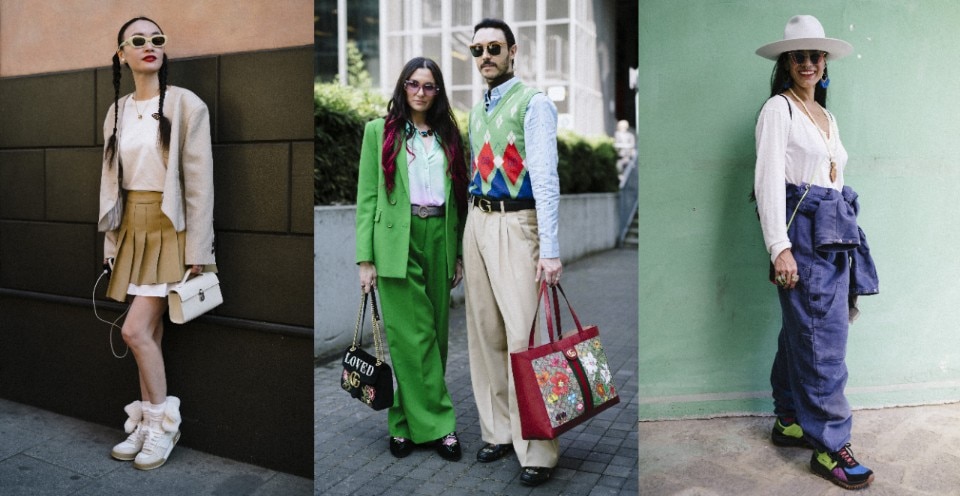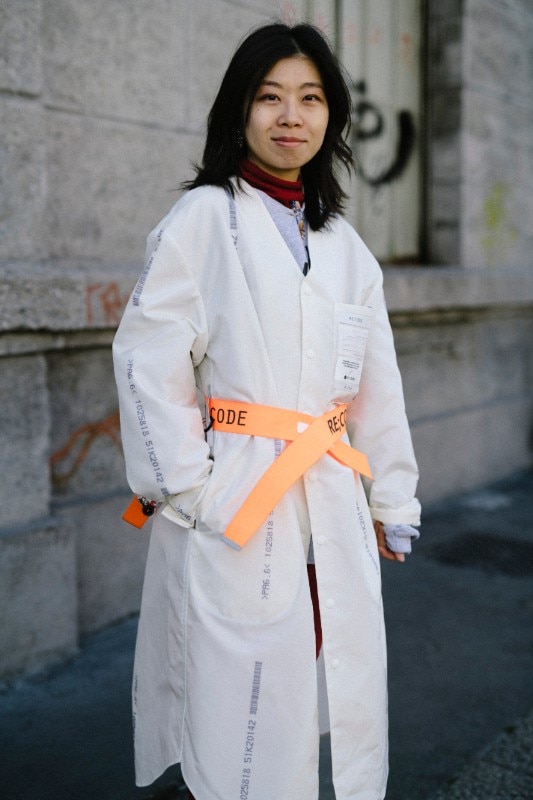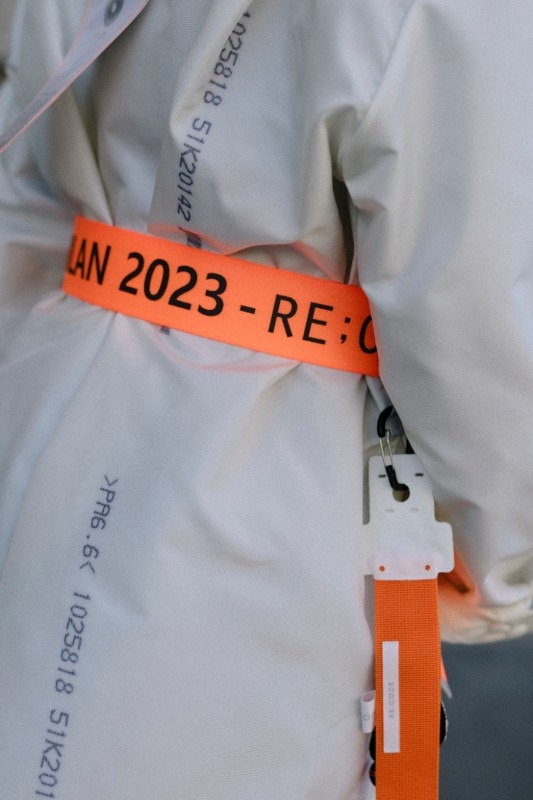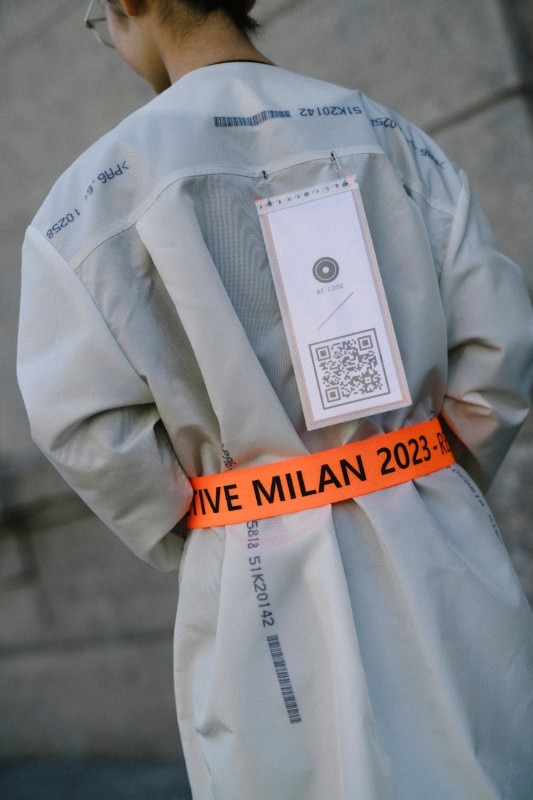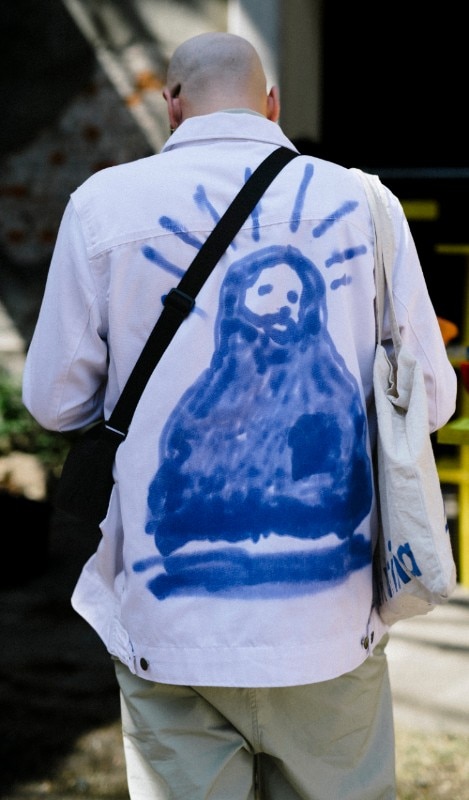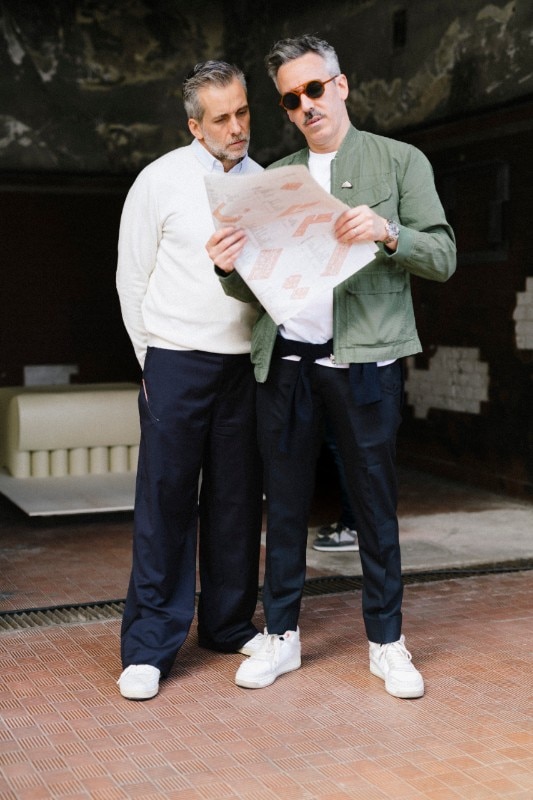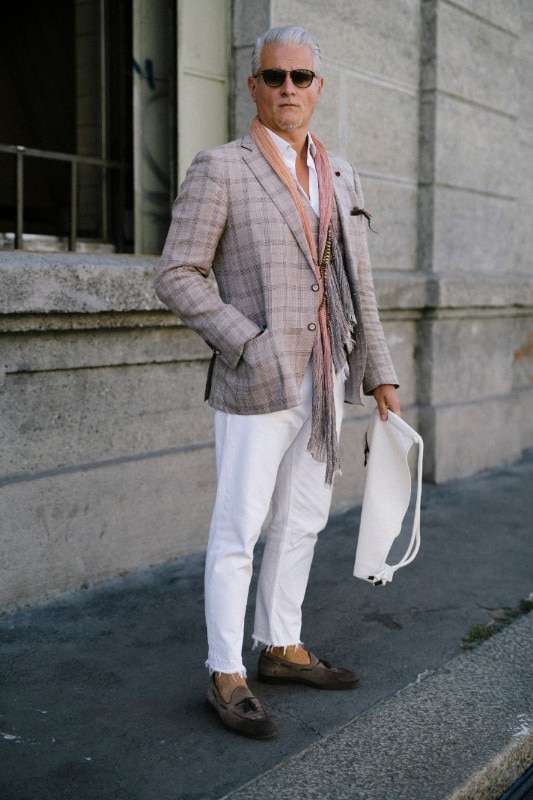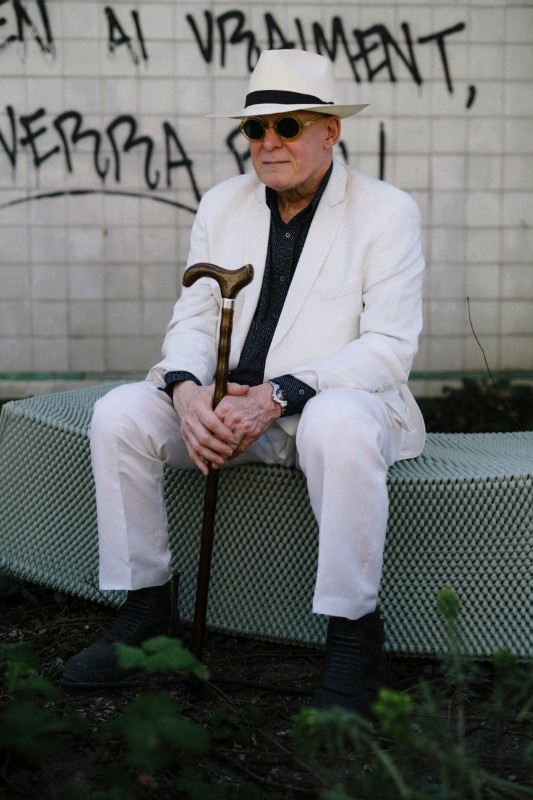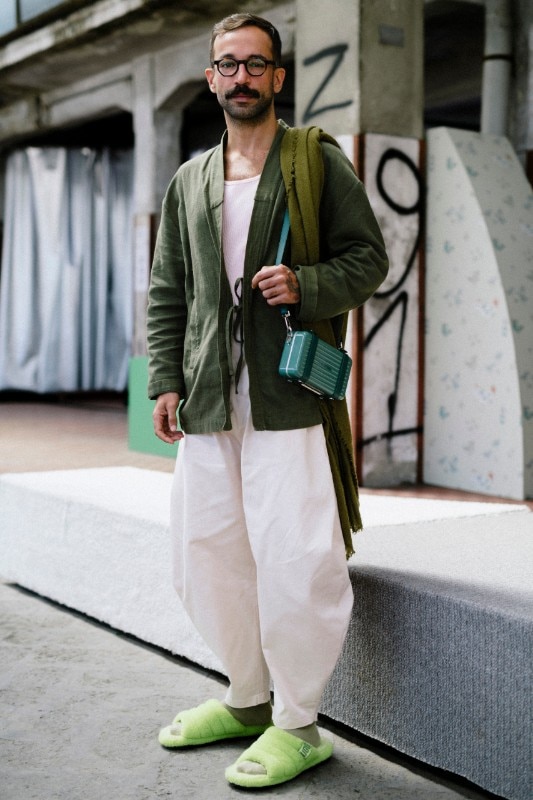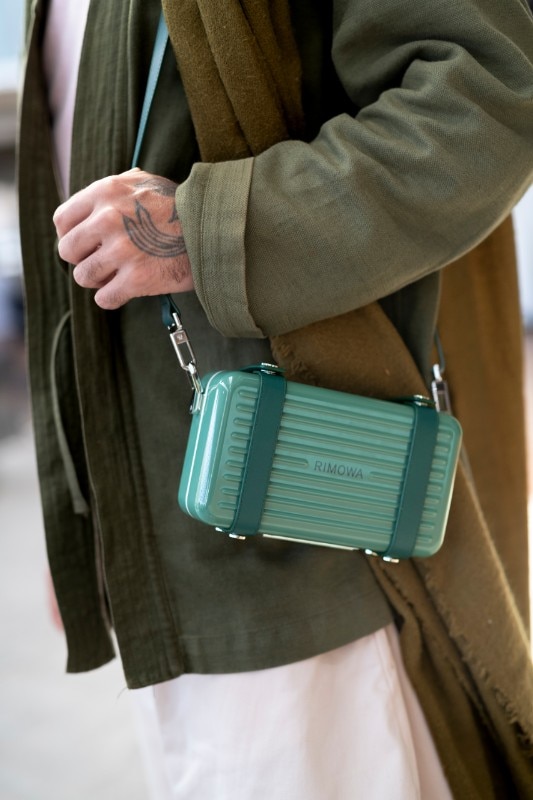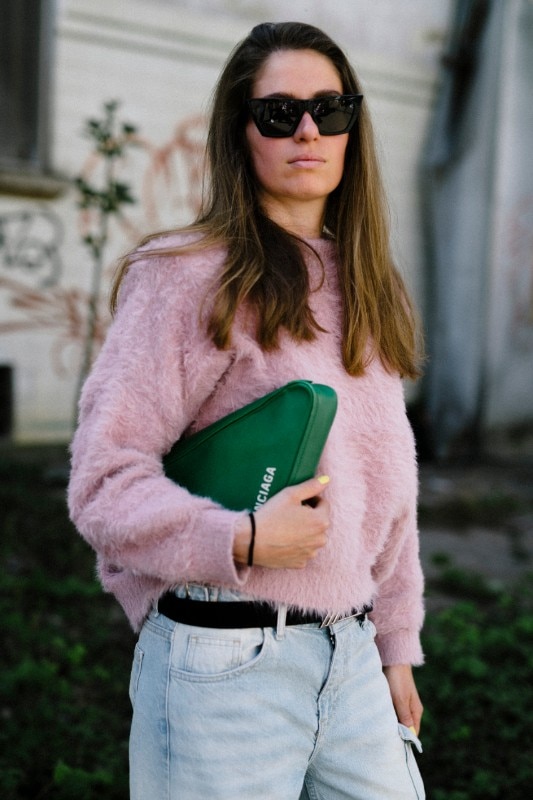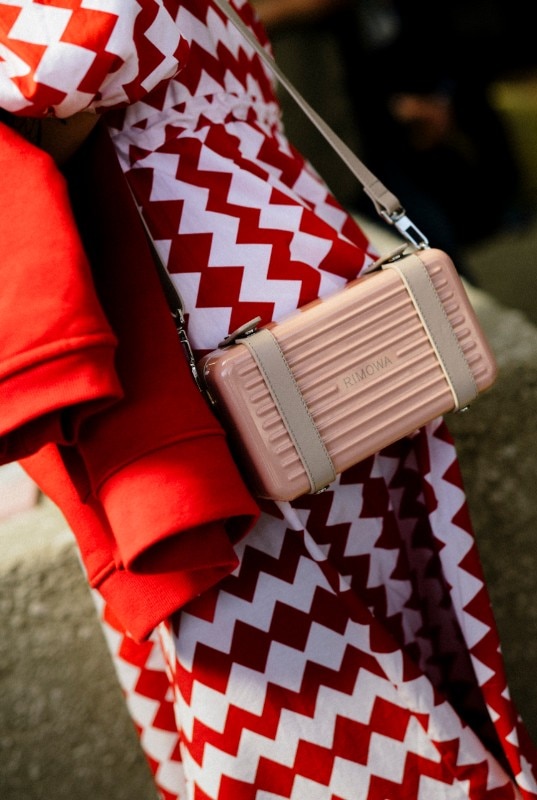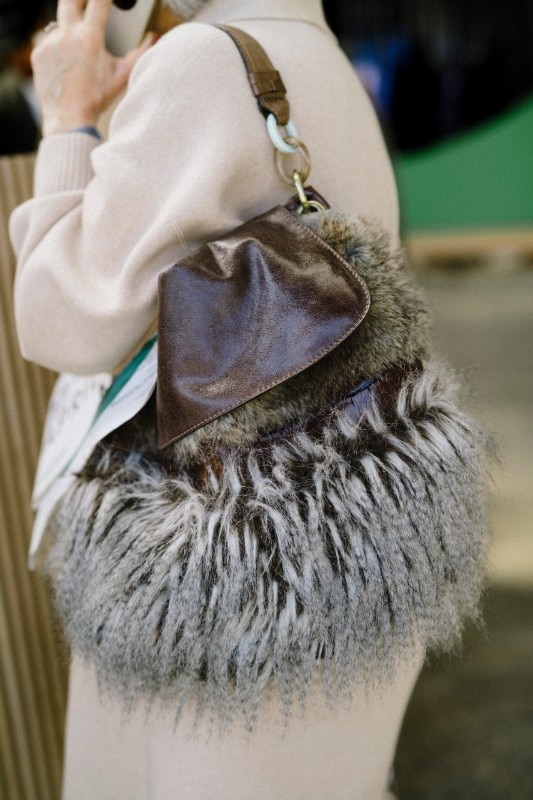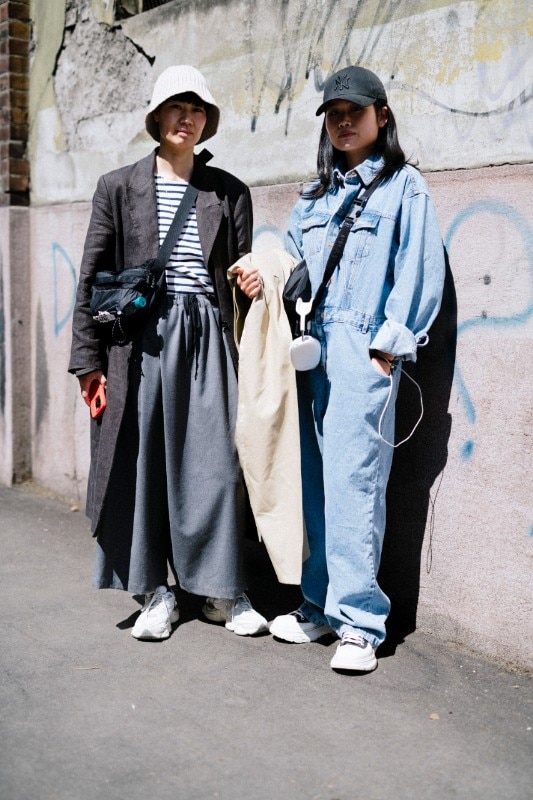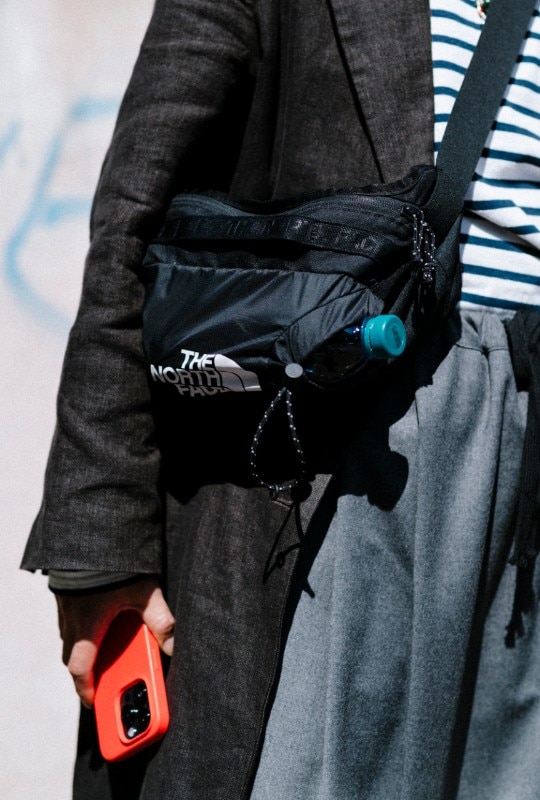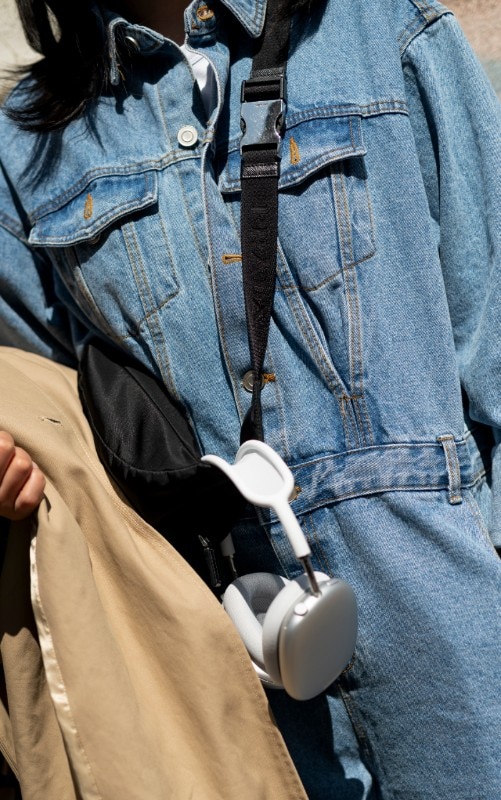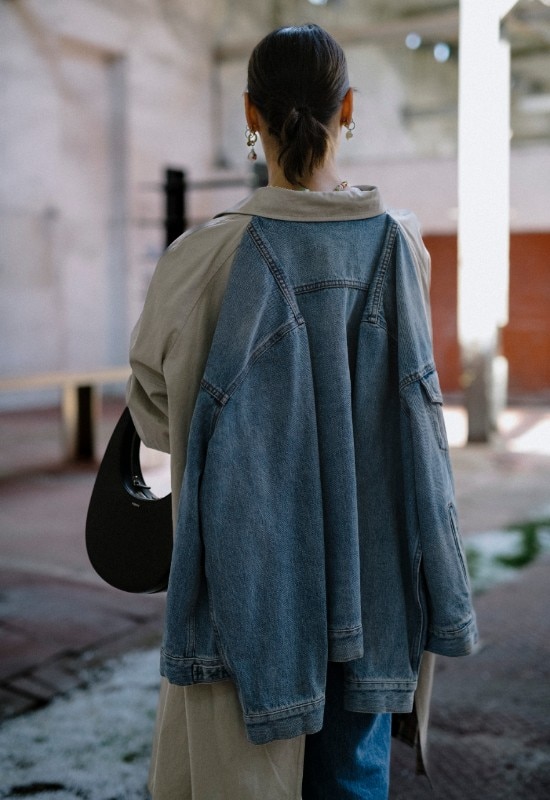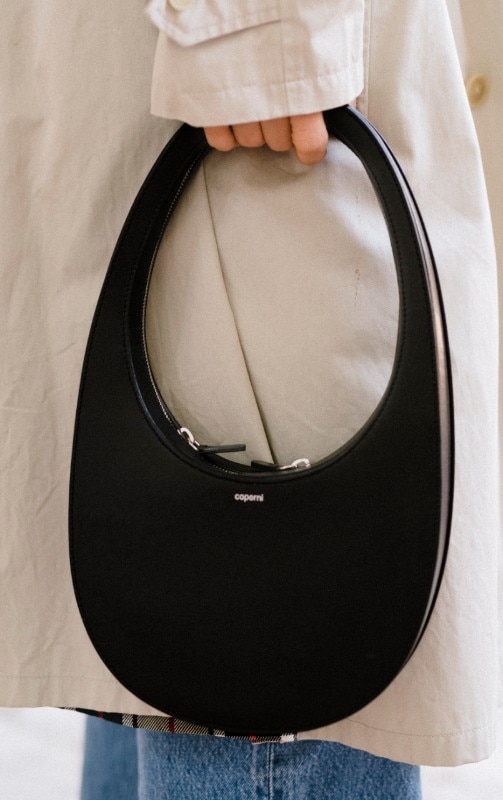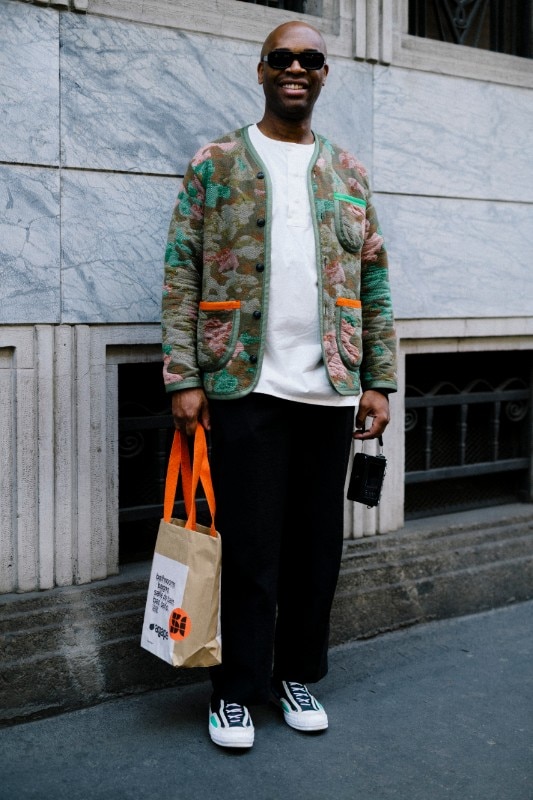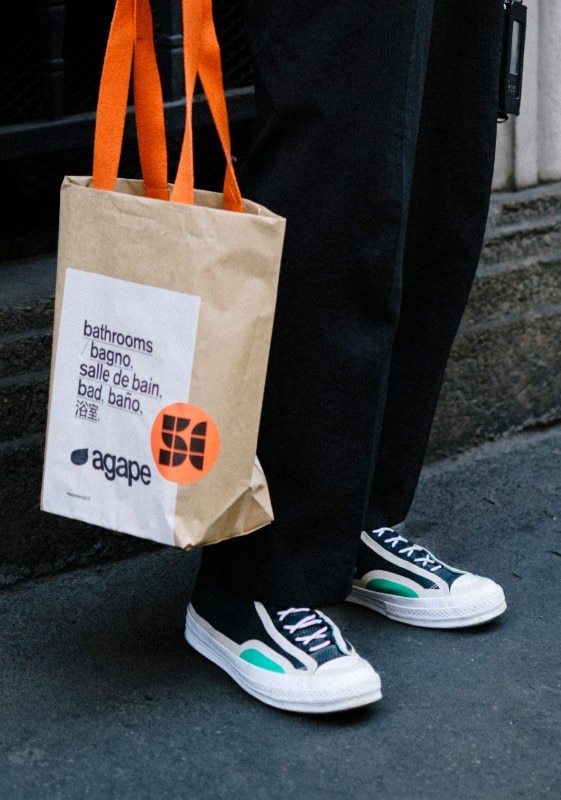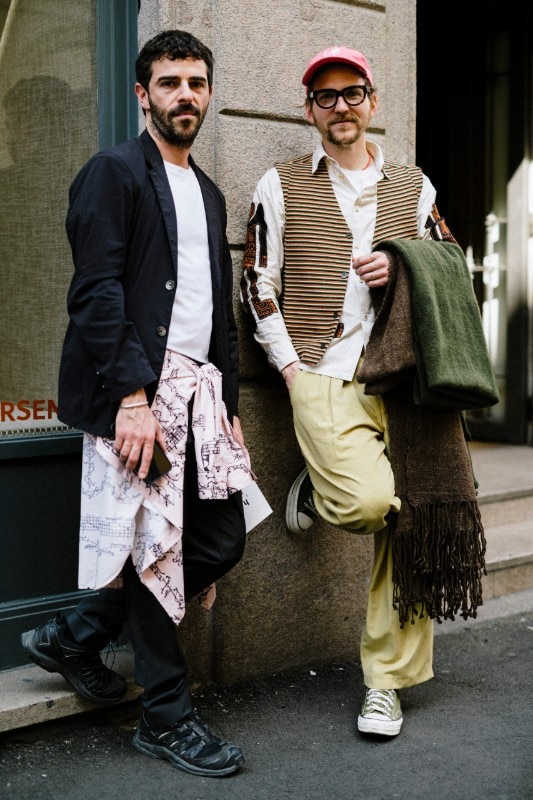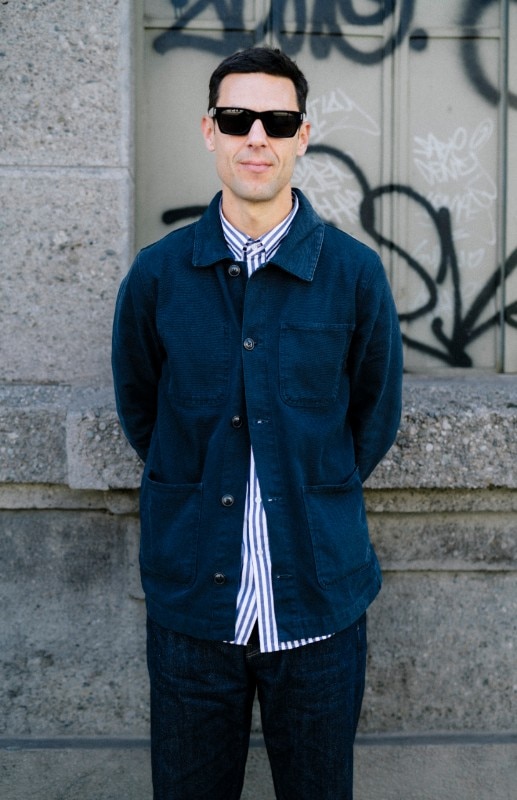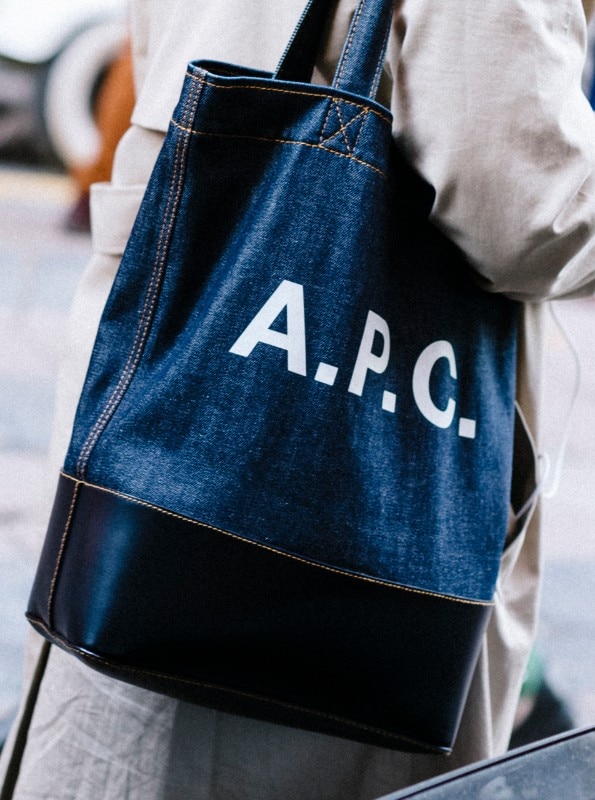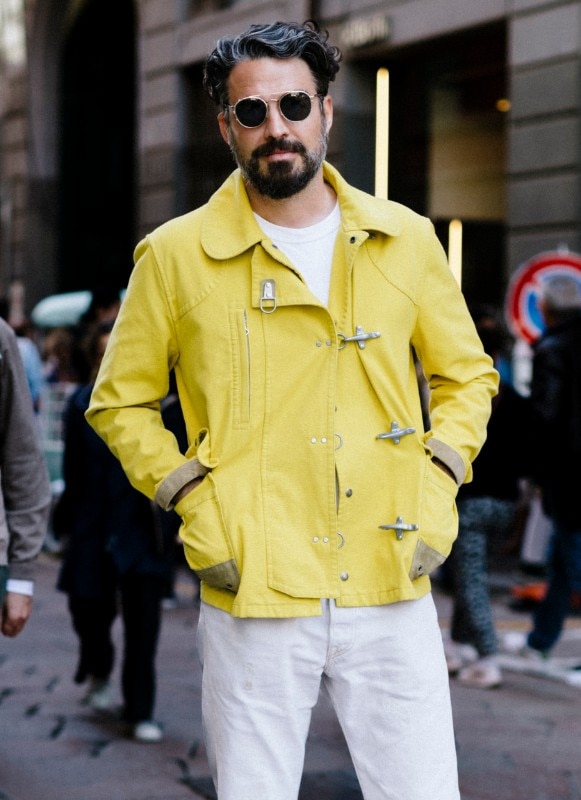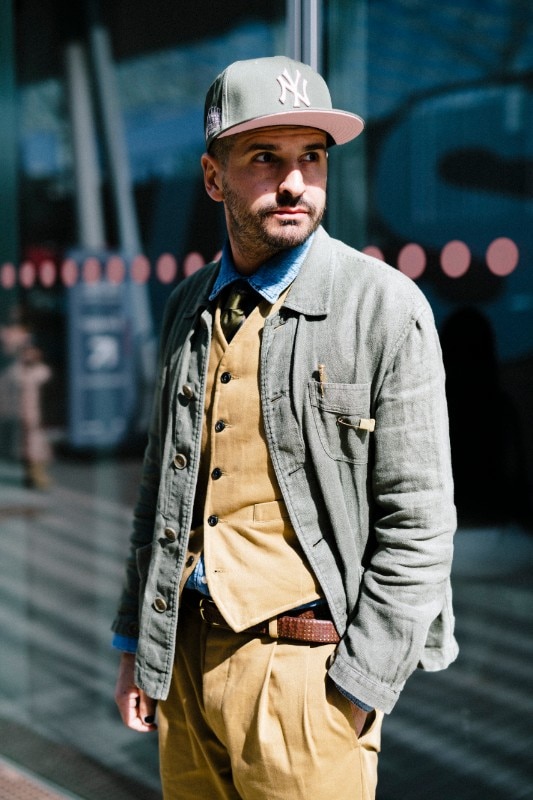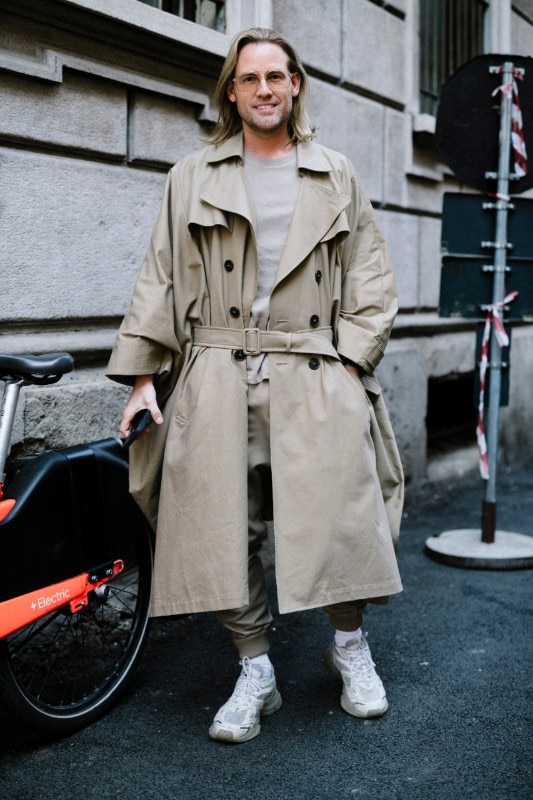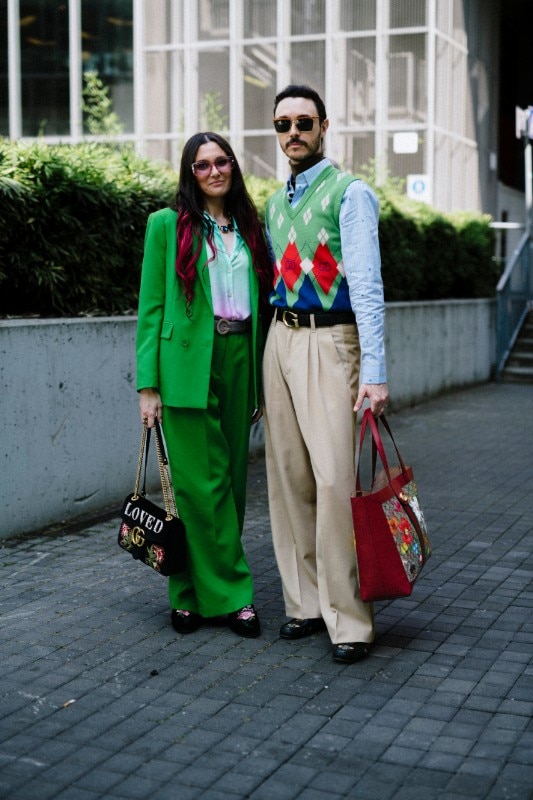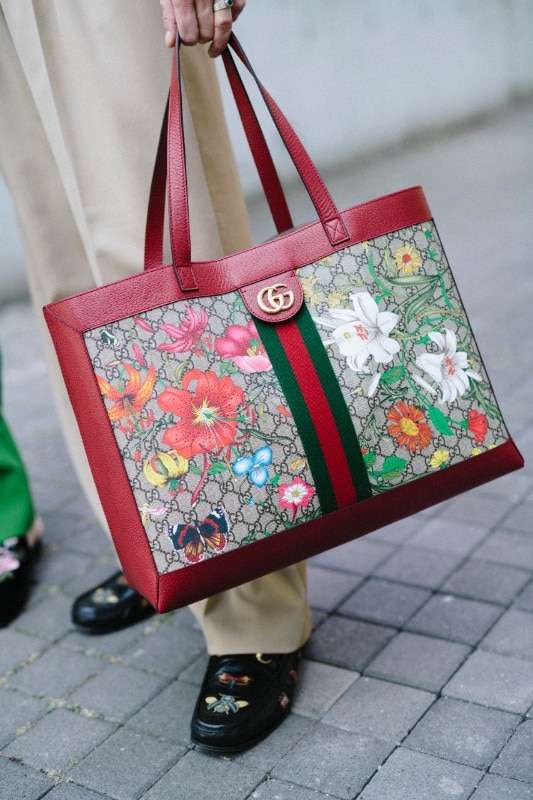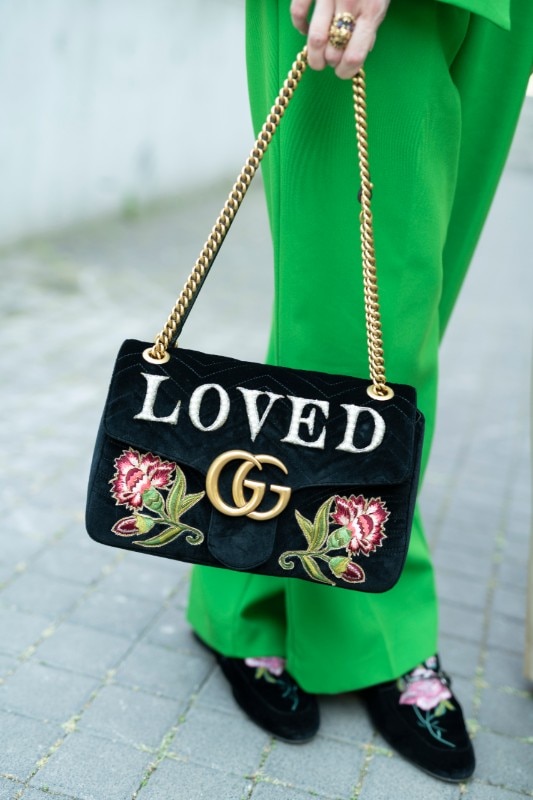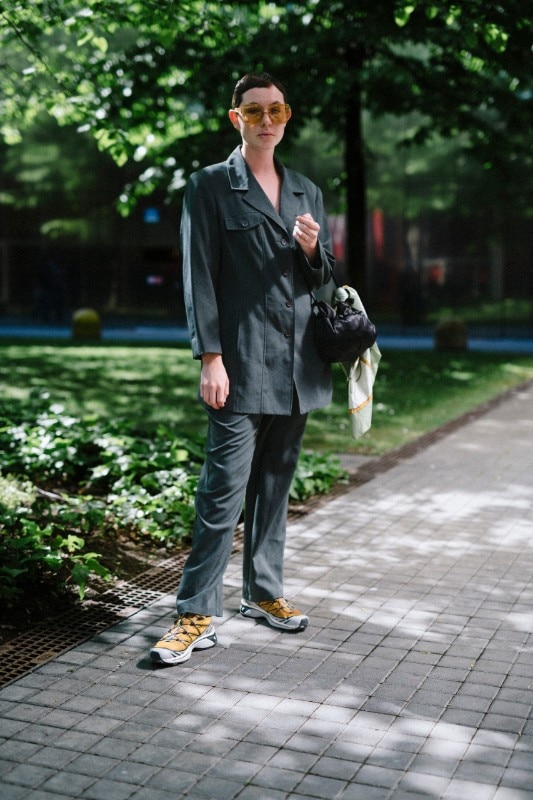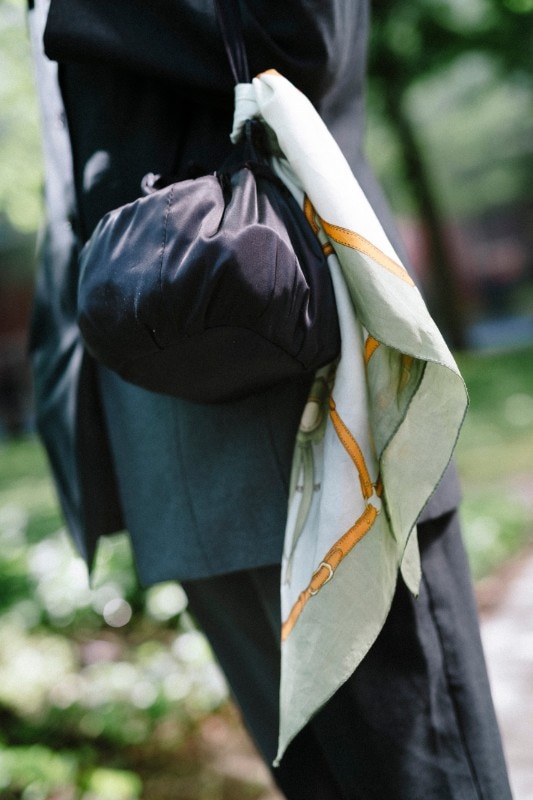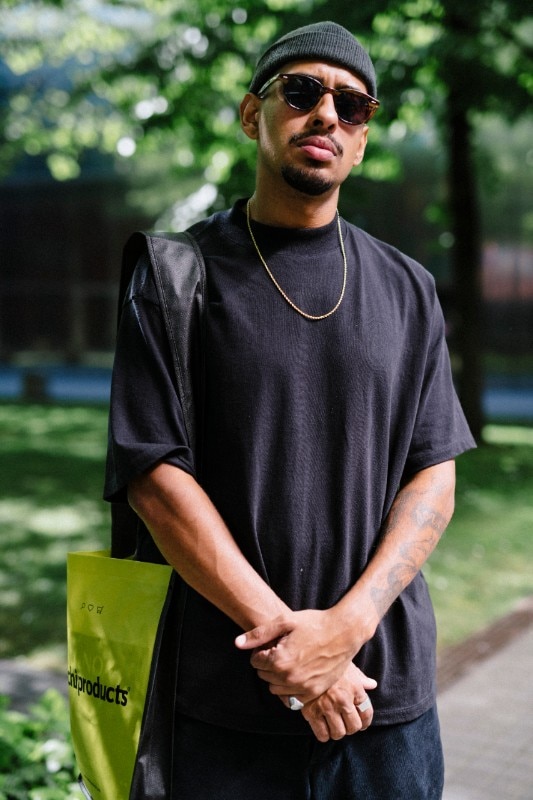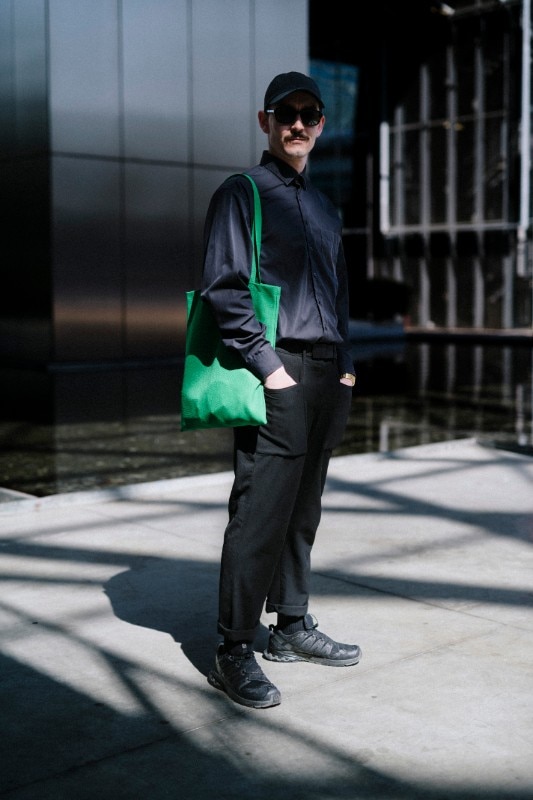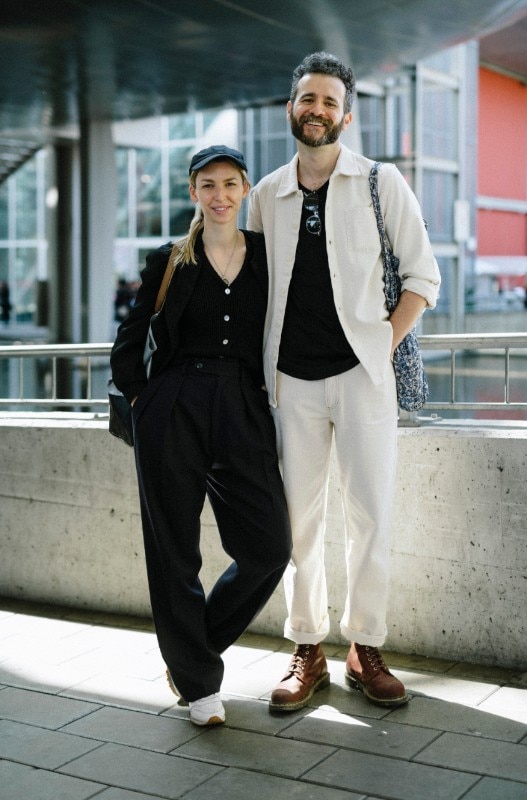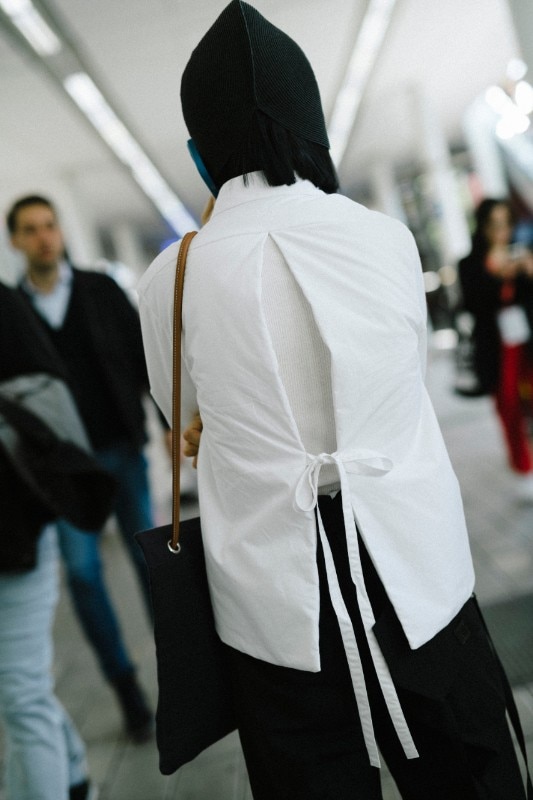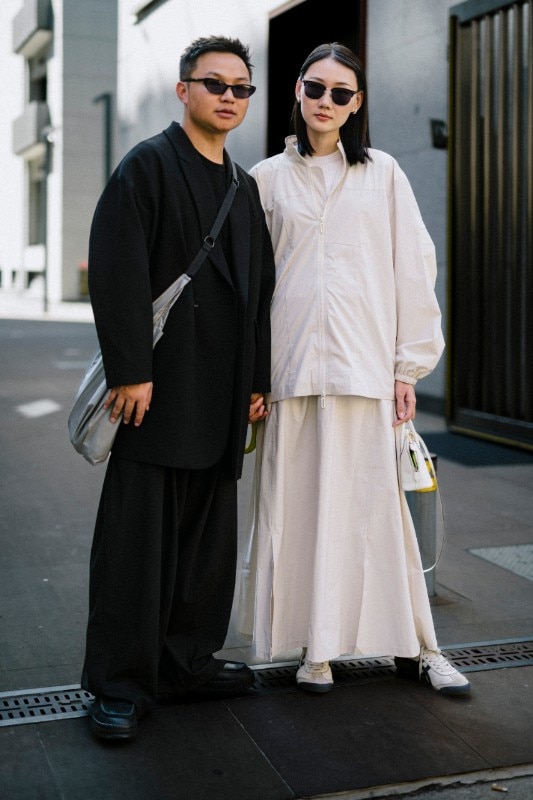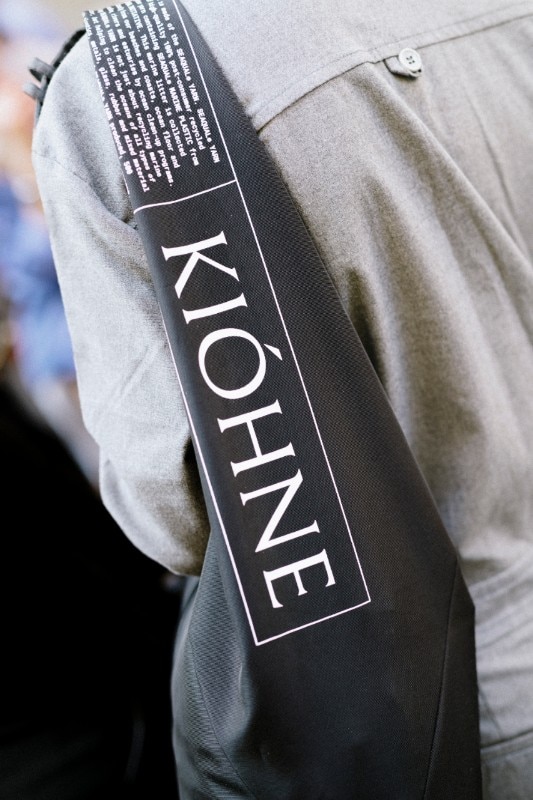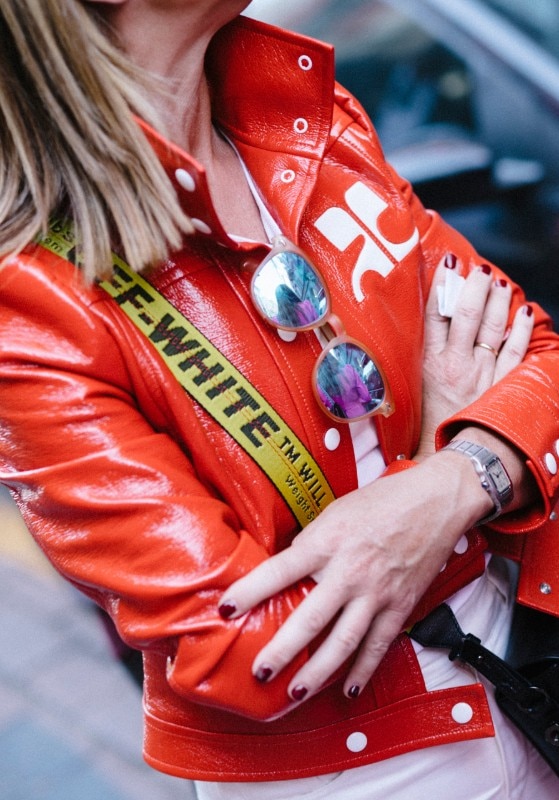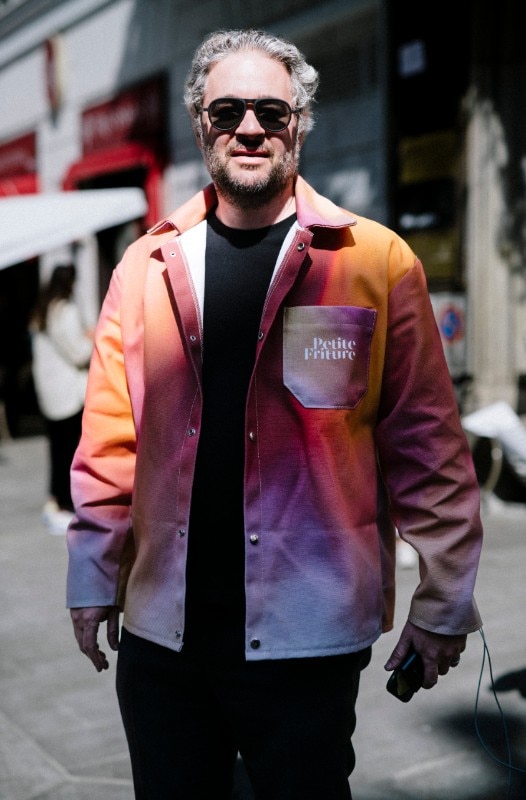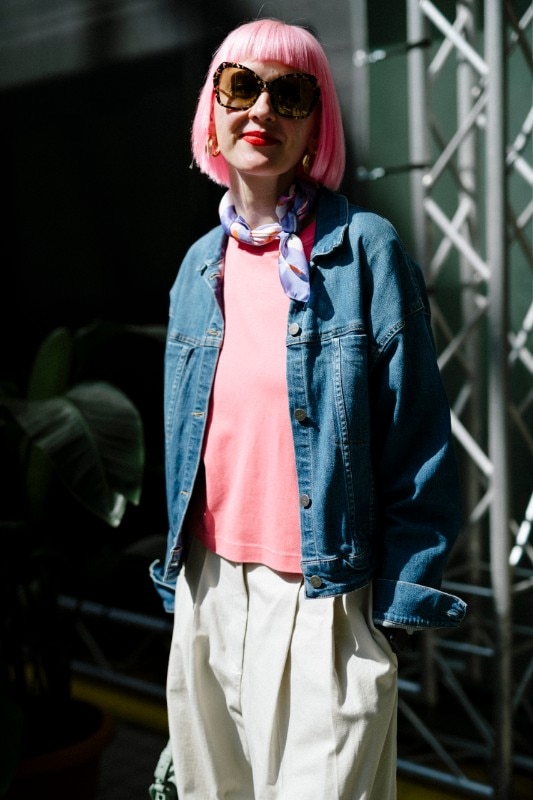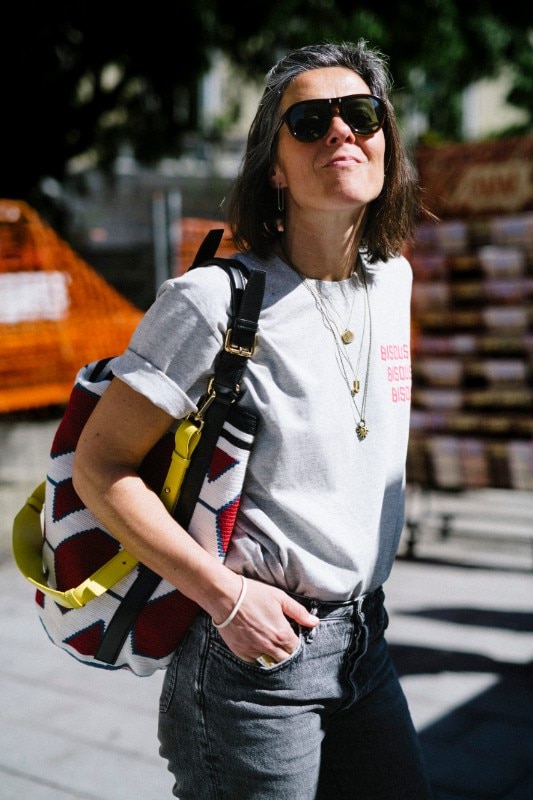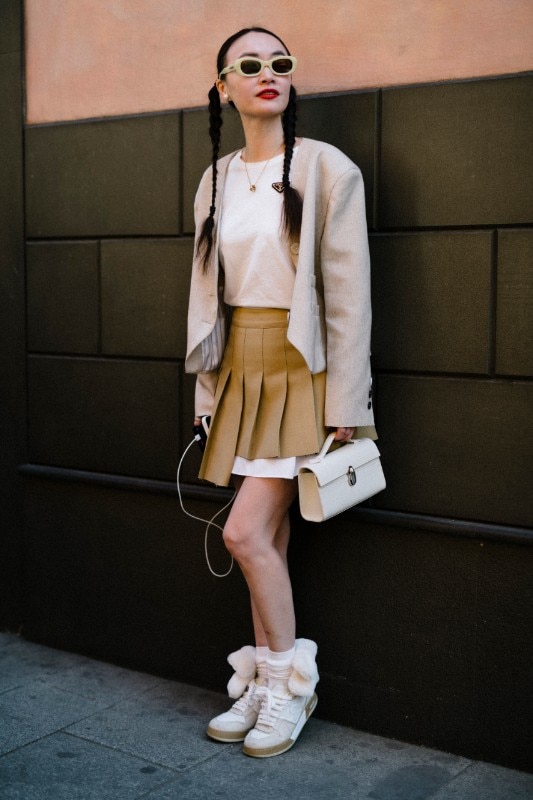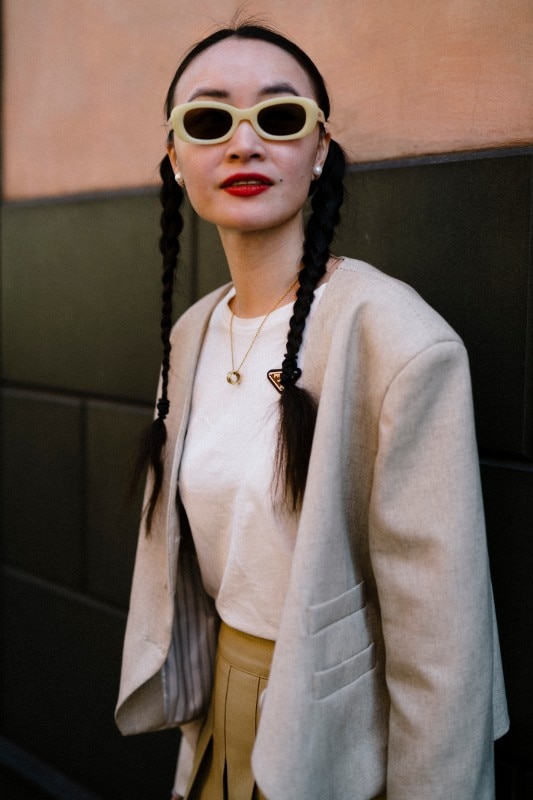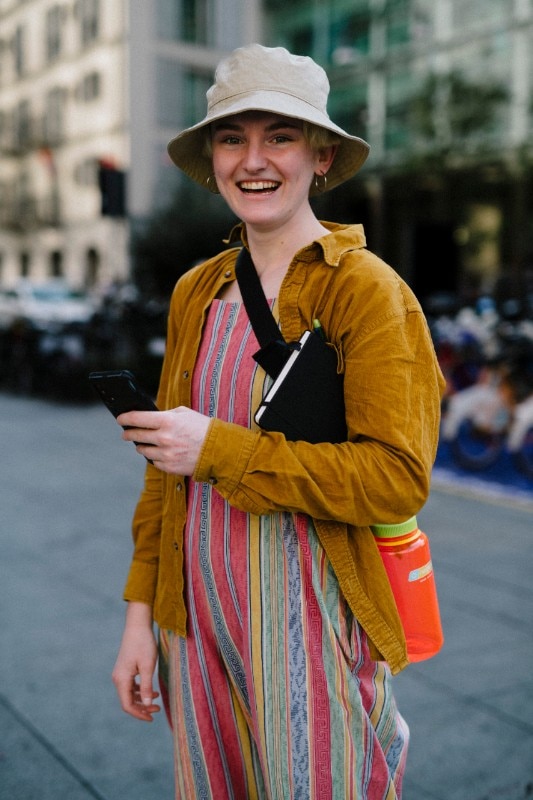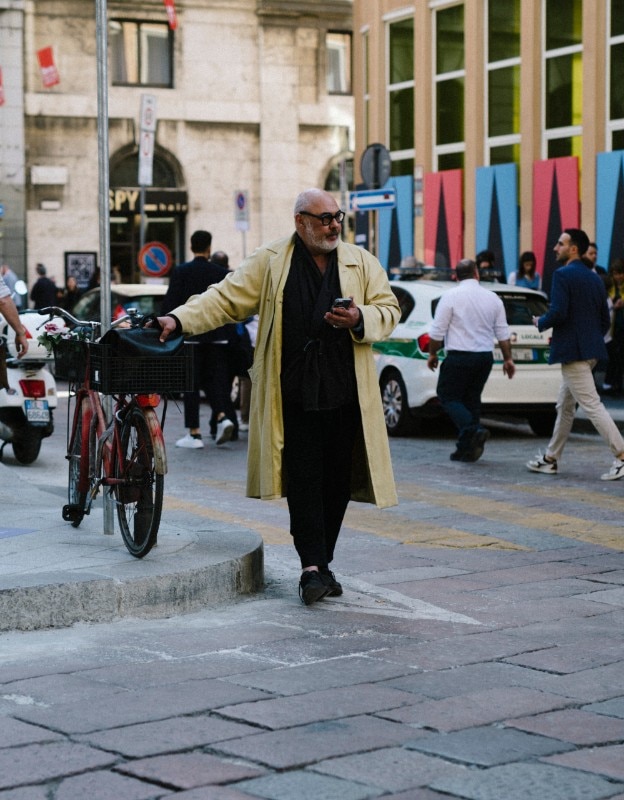Over the years, during fashion weeks, we have witnessed cities transformed into one big open-air catwalk, but the Milan Design Week is no different.
In the days of postmodernism, hence at a time of maximum hybridisation of disciplines and of infinite stratifications of cultural references, the streets turned into a cornucopia of trends and styles that mirror the variety of works on display both at the Salone and the Fuorisalone. To nod to Gillo Dorfles, between fashion intended as a seasonal trend and fashion intended as a system of costumes, it is the latter that seems to be significantly taking the centrestage of the conversation today.
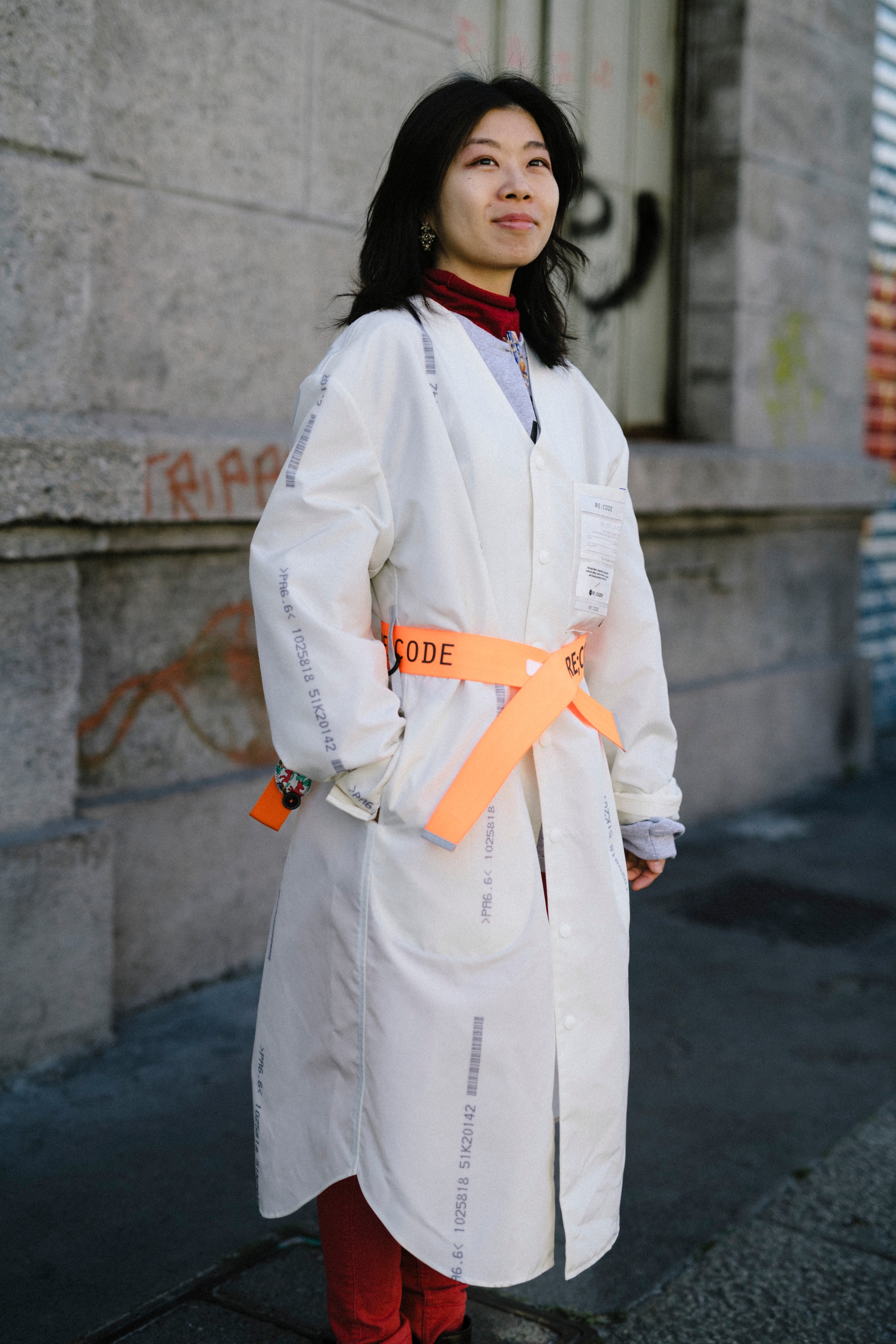
 View gallery
View gallery
The utilitarian scope of fashion
Among the many trends and sub-trends intercepted by Matteo Valle's photographs in the streets of Milan, to emerge is a style that pursues an utilitarian mindset, confirming a certain love of the design community for workwear, boiler suits and work jackets. A nod to the boxy and sturdy to the touch bleu de travail worn by the Parisian artistic community between the two world wars, but also a bittersweet and implicit acknowledgement of the society – as the journalist Ivan Carozzi notes in his latest essay for Eris Edizioni – of the "Fine lavoro mai", meaning “never-ending work”.
Denim, often channeling oversized volumes, couldn’t inevitably be absent from the streets. On the one hand, the trend confirms the appeal for the materic research of raw and selvedge denim fostered – always in a key of street-savvy rediscovery of the workwear heritage – by the Japanese culture, on the other it reveals the design community’s current obsession for all things late-'90s and y2k, as if to reiterate that there is no escape from the Diesel revolution ignited by Glenn Martens.
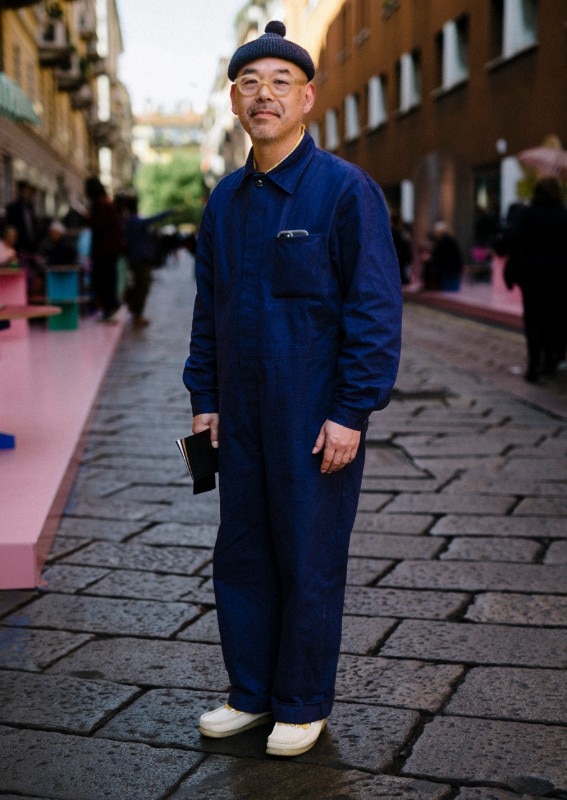
The historical influence of Japan on the culture of architecture and design is also reflected in an equally pauperist and futuristic approach to the wardrobe. This unfolds through a formal research on the cuts of garments and a street-oriented update of traditional clothing such as the haori.
Clothes hence appear to be the cocoon of a community that seeks to escape formality and ageing through streetwear, as if the baseball cap smothered the formality of a suit, and trainers replaced brogues and loafers as bonafide office footwear.
Technical materials meet sartorial and traditional ones in what – at least theoretically – is a harmonious relationship of utilitarian elegance, certainly frugal but not unkempt, as if to suggest that the research of interior designers can also be translated, fashion-wise, into roomy, comfortable yet sturdy silhouettes.
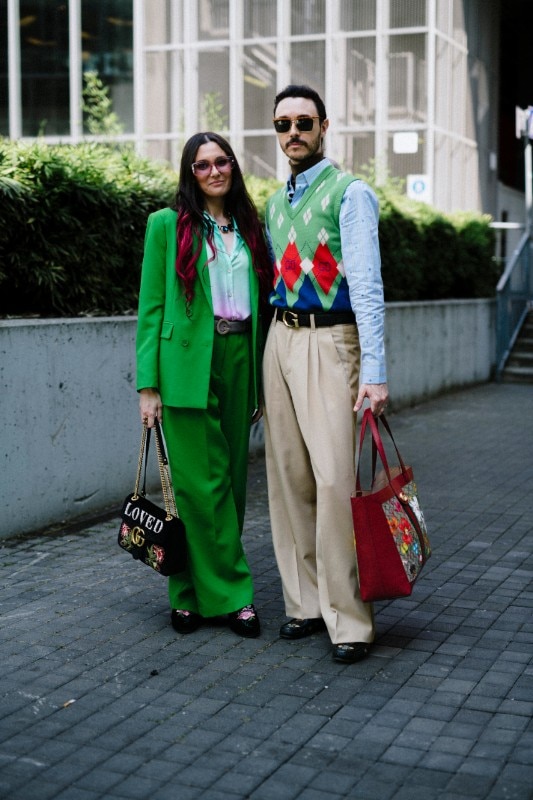
Neo-dandies and Seventies nostalgia
Then, as inevitable as an elbow-to-elbow fight at the bar of Bar Basso, there is the peacockery of neo-dandies, a must-see of every well-respectable streetstyle parade. These bearded Pitti Uomo daddies thrive in their dedicated and uber-performative social media niche, despite being well beyond your average stereotypical tik toker age. Their lizard skin is tanned all year long, their garments always maximalist, they know no middle ground: their ankle is either obscenely uncovered even in winter or wrapped in garishly coloured socks, the trousers are either sharply narrow with a four-and-a-half centimeters cuff or extra-loose, yet always pleated and high-waisted.
The last stints of Alessandro Michele’s Gucci are also on display here in Milan, unfolding in the form of Seventies-flavoured oversized frames, flares and safari jackets for those wishfully hoping for some Mediterranean springtime warmth otherwise disregarded by the rain. Michele’s Gucci no doubt contributed to popularise the use of handbags and purses for men too, of which there is a solid display at the Fuorisalone. Above all, the compact and functional ones by Rimowa, to be carried in hand or strapped around the shoulder as sturdy, utilitarian and glamorous cases.
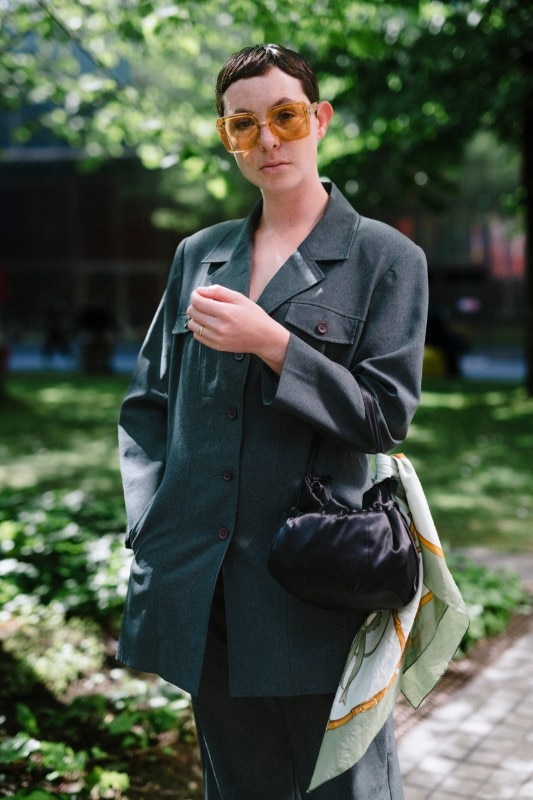
The research on materials
Similarly, the appeal of Off-White is enduring. The brand proves to be a coveted status symbol for those eager to show off, on the public catwalk, their familiarity with the hybridisation of streetwear and design.
This is after all the pivotal fashion theme at this Design Week, dominated by collateral events powered by the likes of Highsnobiety, Hypebeast, One Block Down and like-minded streetwear firms. The technical materials that paved the way for the Gorpcore trend – made of staples which include Arc'teryx anoraks and Nike’s most experimental-edged garments – come from the wardrobes of design workers, underlining the appeal, stronger than ever, of design and architecture on popular culture.
This is also suggested by the research, equally shared by the manufacturing and fashion industry, on organic and sustainable production techniques, which can be traced in the patterns and materials of the clothing photographed.
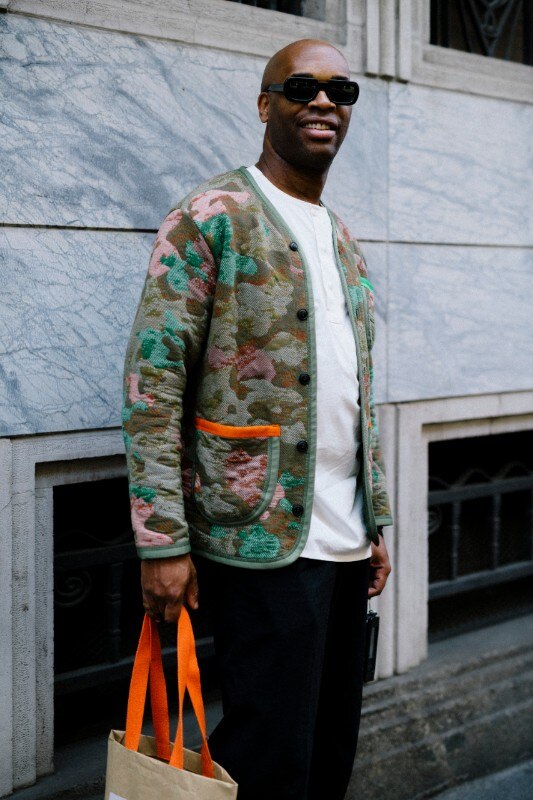
It is not surprising, then, that between the vanishing phenomenon of chunky trainers à-la Balenciaga and the return of Adidas Samba-style silhouettes, the design world is focusing on trekking and running shoes, like New Balance and Salomon, which have become a staple of street culture well beyond their original purpose. As Darryl Matthews, Footwear Design VP at Nike, points out, today “we design for social athletes”.
Clothes hence appear to be the cocoon of a community that seeks to escape formality and ageing through streetwear, as if the baseball cap smothered the formality of a suit, and trainers replaced brogues and loafers as bonafide office footwear.
Layering of garments, of fleeces and padded vests, similarly, seems to be the answer to another environmental issue: the weather unpredictability in a period of rising climatic emergency. Having waved goodbye, with a certain Anglo-Saxon attitude, to the age-old burden of the springtime wardrobe turnover, the pragmatism of designers seems to have contaminated the Italian fashion system too, turning clothes into Global (and universal) Tools with which to adapt to and face the challenging world of today.
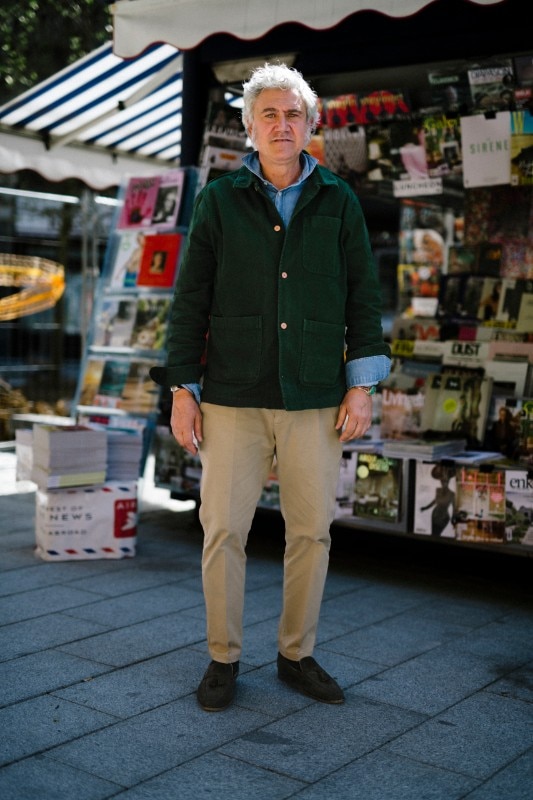
Memetic and social performativty
The ultimate line of demarcation between designers and civilians, though, is the cap. There are the New Yorker-chic ones of the baseball teams (LA Dodgers, Boston Red Sox's, New York Knicks and Yankees above all), often worn in exclusive collaborations that span from the art hoe (MoMa) to the hypebeast (Aime Leon Dore). But also the post-ironic ones, typical of normcore and meme culture, such as those sold on tourist merch stalls or the thrifted ones issued as promotional gifts by the most diverse of local enterprises.
Similarly, tech products, such as the Apple AirPods Max, primarily become a socio-performative accessory in which fashion meets design.
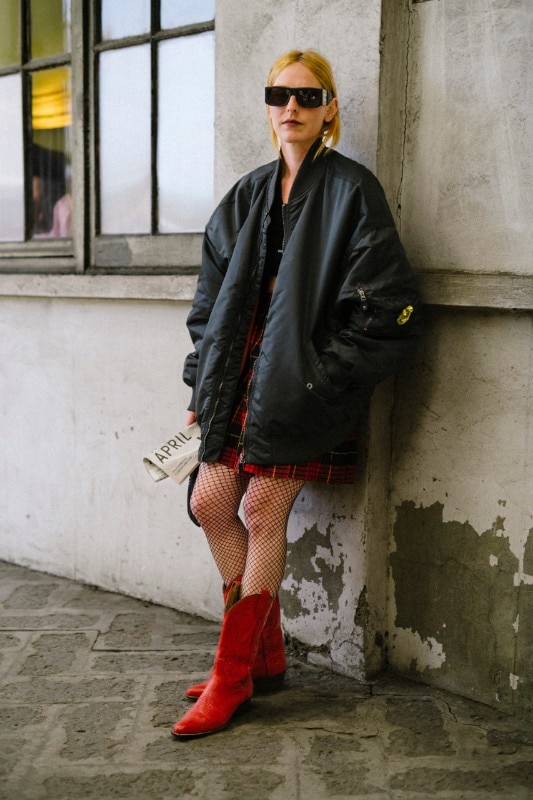
The hybridisation of fashion and design
Although progressively leaving the hard-to-die stereotype of their mandatory total-black look behind, designers and architects love to influence their style with the pragmatism of their practices. Thus, even if the hyperbolic speculation of fashion don’t surface that much during Design Week, these two worlds are now more colliding than ever, also thanks to the growing interactions between the subjects fostered by social media and by the acts of artistic patronage of fashion houses.
Opening image: a selection of street looks from the Milano Design Week. Photo by Matteo Valle


